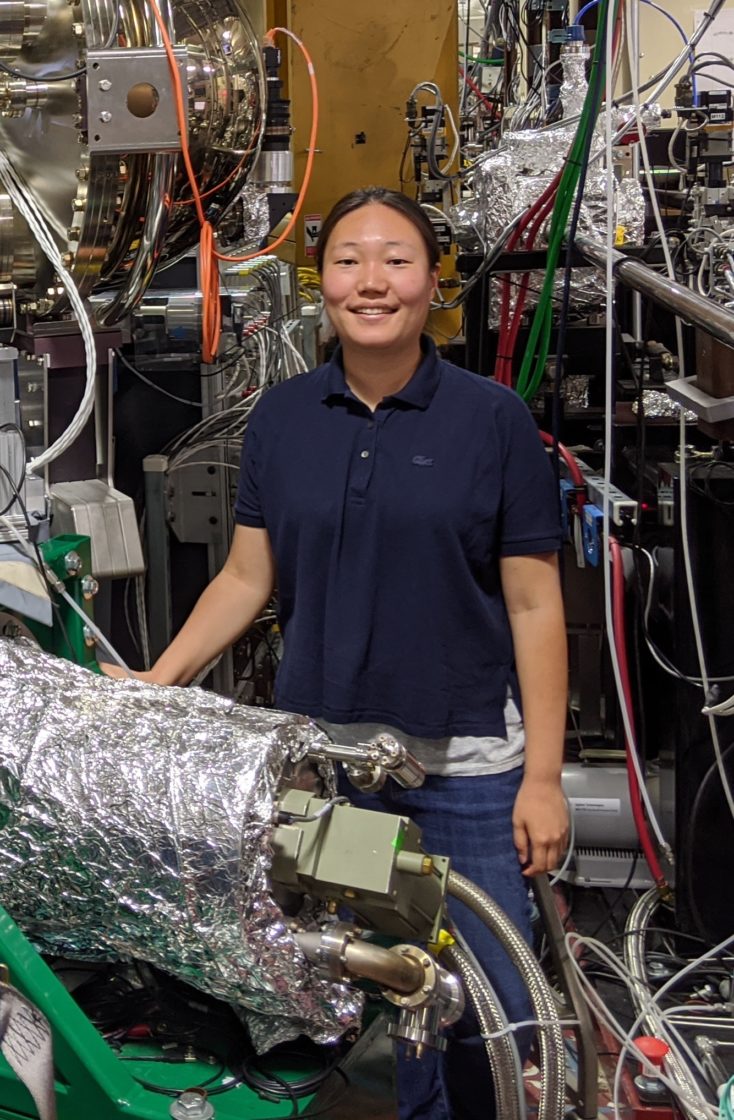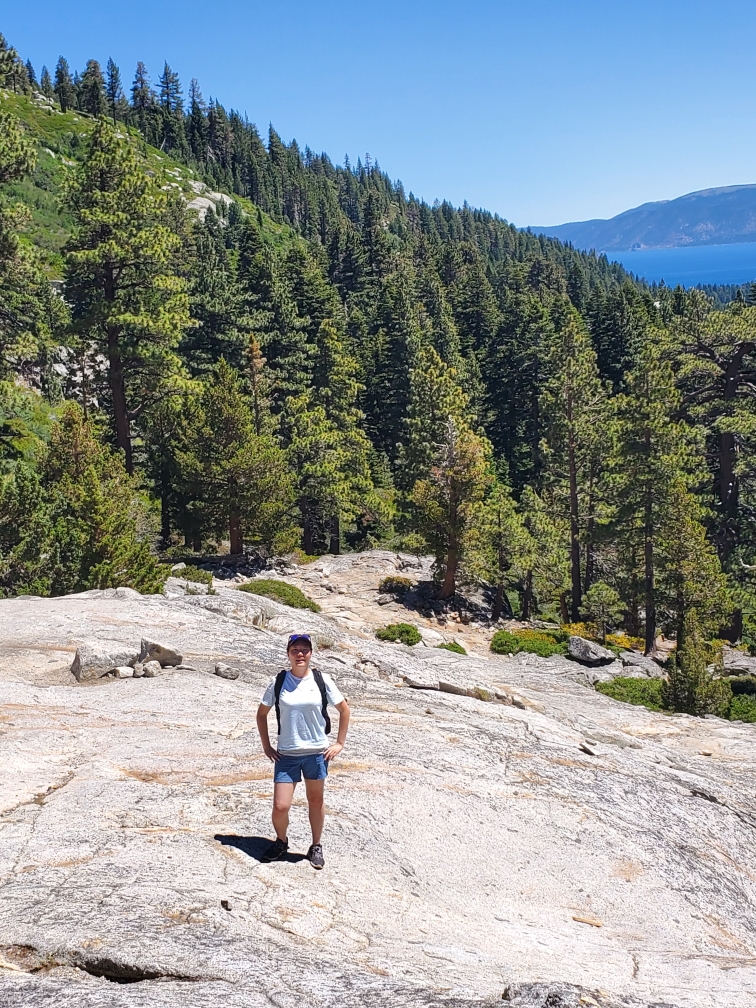 Na Hyun Jo has only been at Berkeley Lab for five months, but she’s already helping to organize the Energy Sciences Area Science Hour. Find out more about her research and what inspired her to become a scientist.
Na Hyun Jo has only been at Berkeley Lab for five months, but she’s already helping to organize the Energy Sciences Area Science Hour. Find out more about her research and what inspired her to become a scientist.
What is your research focus?
I’m currently in the Quantum Systems Accelerator (QSA), a new quantum information center based at LBNL. QSA is a really big center, and my group’s part is studying the fundamentals, so trying to find new materials and understanding their physical properties. One of the tools we’re developing is a stress cell. Stress is defined as force divided by area. We’re applying stress, or force, on a material and then detecting the changes in the material properties. At the same time, we’re shining light on the material to understand its physical properties.
How did you become interested in this field?
When I was a child, I really liked math and science, but what really got me into this was a book by Richard Feynman. Science was always equations—it was fun, but it wasn’t related to real life. In his book, I saw that life was science, and he was doing science in fun ways. I really wanted to try that, so I got into physics and started to work on crystal growth as an undergrad researcher at Sogang University in Seoul. I then did my PhD at Iowa State University.
I lived in a city my entire life, and then suddenly I came to Iowa State, which was in the middle of nowhere. The people there were super nice, and I really enjoyed working with people from all over the world. During my PhD, I did single crystal growth and characterization using electrical transport and measuring magnetization. One thing that I was fascinated with was studying the electronic structure of materials via quantum oscillations.
After my PhD, I wanted to proceed with my interest in electronic structure research via another, more direct, way of observing electronic structure: angle-resolved photoemission spectroscopy (ARPES). I first learned the laser-based ARPES at Ames Laboratory. And then, my advisor suggested that the ALS would be the best place to expand my horizons through synchrotron-based ARPES, so I contacted Eli Rotenberg, and luckily, I found a position here. In the future, I hope to stay in academia, discover new material systems, and teach students, sharing my enthusiasm about materials research.
How has your experience been, starting at the Lab during the pandemic?
It wasn’t easy. I came to Berkeley at the worst COVID time in California, so many things were either closed or very restricted. I was lucky to work at the lab two days per week, but I was somewhat isolated to work safely in the pandemic. Thus, even small things that wouldn’t be a problem before the pandemic (i.e., finding a place for training or some tools to work with) were hard as I was new to LBNL and couldn’t ask around. But, people are really willing to help in various ways. Eli arranged virtual meetings for me so that I could connect with other people. Alpha also introduced me to the ALS community.
My first beamtime experience was really amazing. I had never used a synchrotron source before, and it was so cool. Eli, Chris Jozwiak, and Aaron Bostwick are really patient and take the time to teach me. From February to May, I was working on a stress cell to implement our system, and the first time that worked, that was a great moment for me!
 Are you involved in inclusion, diversity, equity, and accountability (IDEA)?
Are you involved in inclusion, diversity, equity, and accountability (IDEA)?
I’m not involved in any IDEA activities yet because I’ve only been here for five months, but I’d like to talk about imposter syndrome. It happens to everyone, but more frequently for minorities. As an Asian and a woman in STEM, I’ve experienced that. It sounds negative, but I’ve found that sharing my experience with others and listening to what others have experienced is helpful. I’ve participated in a Women in Physics group, and sharing all these things with them was very nice. International students also tend to have a hard time because of cultural differences, so helping them is always a good thing.
What is Science Hour, and how are you involved?
The Energy Sciences Area (ESA) Science Hour is led by postdocs from each division—ALS, Materials Sciences, Chemical Sciences, and the Molecular Foundry. Postdocs give research talks, and we hope that they will learn how to interact with people in different disciplines, learn what other divisions are doing, and collaborate more in the future. It’s open to everyone, and we’re very happy to have more presenters. People who are interested can contact me.
What do you like to do in your free time?
I love nature—hiking, walking, or sitting outside and looking at cool oceans or mountains. When beamtime ended, I went directly to Lake Tahoe. I also like trying new food. There are so many restaurants around the Bay Area!